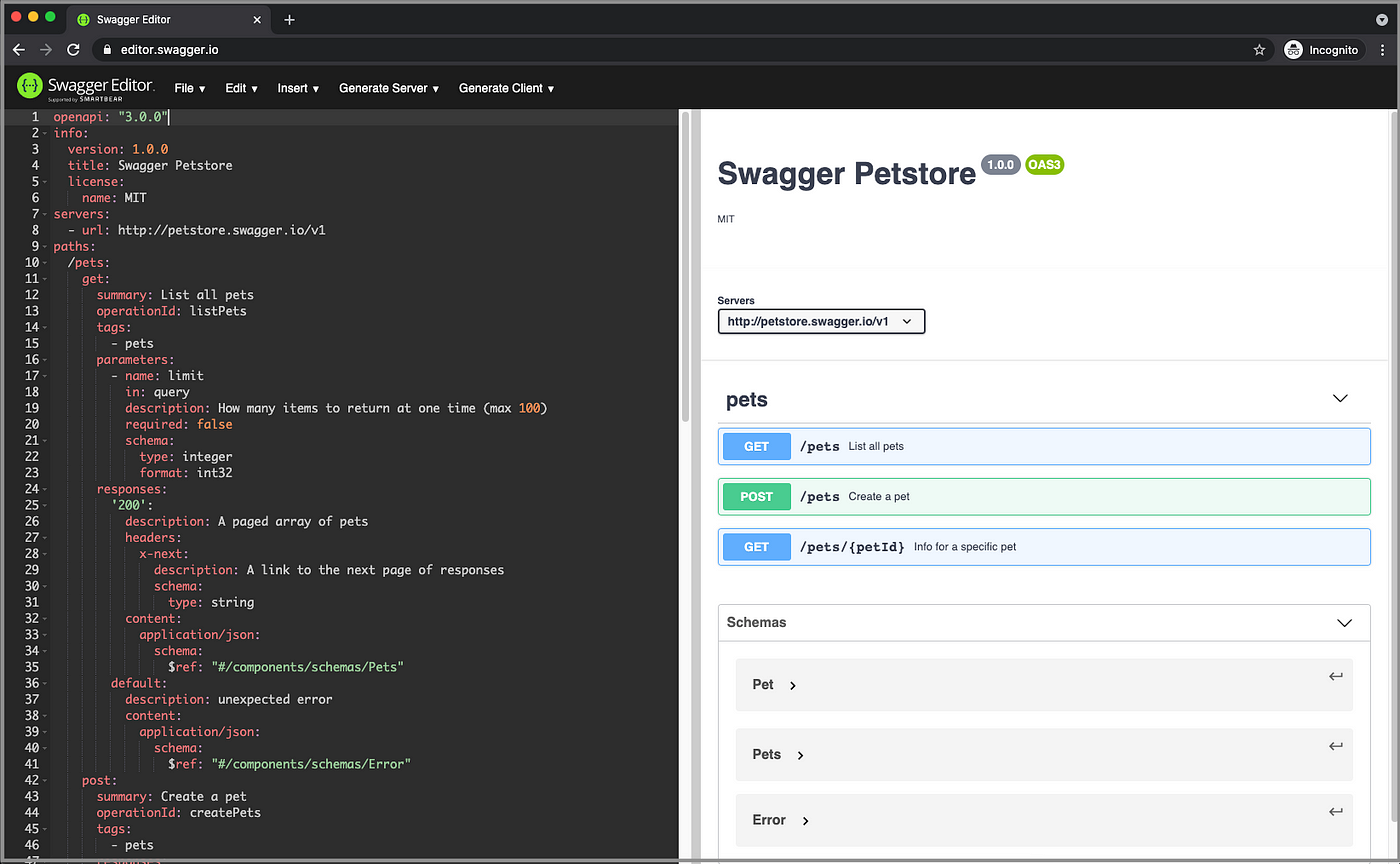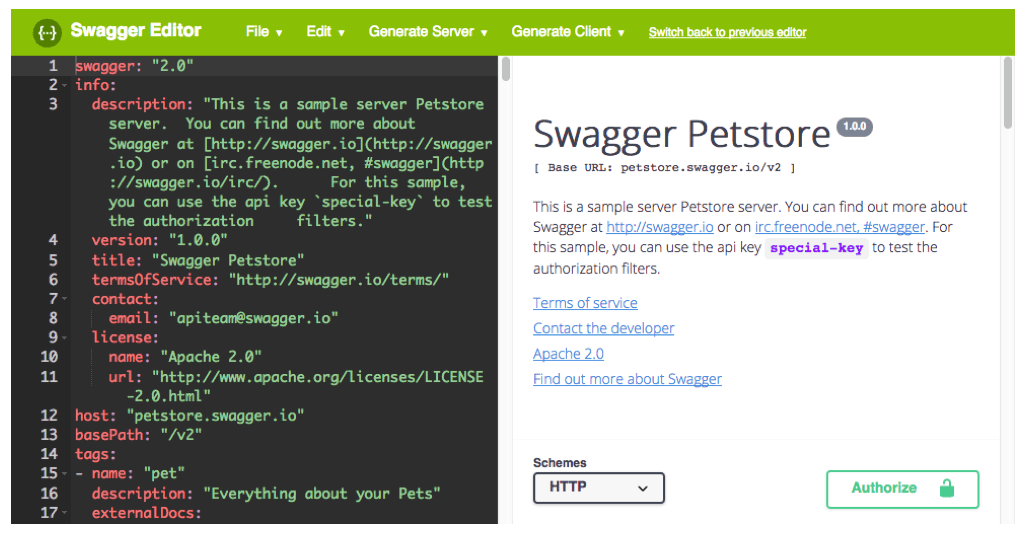

Use swagger editor to edit other things software#
Installing previous software in my server But in this case it is going to be a very basic deployment. Maybe in a future I’ll write about deploying more services to this Openstack installation like Cinder to manage volumes or Ceilometer for Telemetry. Only with a few basic services: Nova (to deploy VMs), Neutron (to manage networks), Glance (for the VM images) and Keystone (for user identification). You can always do with 1 compute node anyway.Īs you can imagine, this is going to be a very simple Openstack deployment.

Yes, it is not cheap in terms of memory, however, it is rather affordable. IT IS ONLY INTENDED TO SIMULATE INFRASTRUCUTRE.īefore doing anything, just starting my Ubuntu 20.04 with my Brave Browser to start writing this POST, my memory consumption is 2.62 Gb.Īfter starting my Openstack cluster with one controller and 3 compute nodes, my memory consumption is 8.4Gb.
Use swagger editor to edit other things how to#
After writing about using LXC and showing its capabilities to run Docker and Virtual Machines, in a Post showing how to start with LXC, and the second one showing how to deploy a Kubernetes cluster in with LXC, I’m going to show today how I’ve deployed an Openstack Cluster using LXC, once more I’ll be using ansible as a helper tool to deploy the containers and install the software I’ll need to deploy in the cluster before deploying Openstack.Īs I already said in my previous post, I’ll recomend you to be aware that THIS IS NOT A PRODUCTION SOLUTION.


 0 kommentar(er)
0 kommentar(er)
